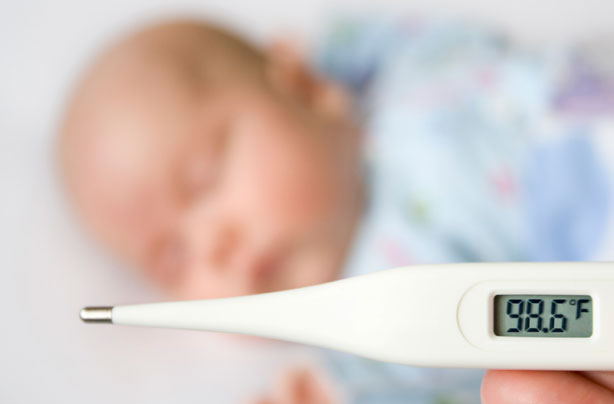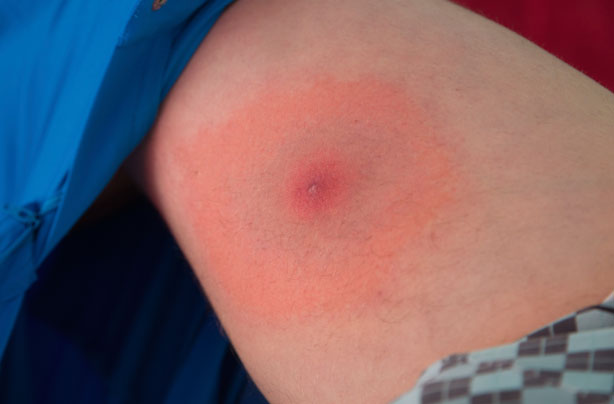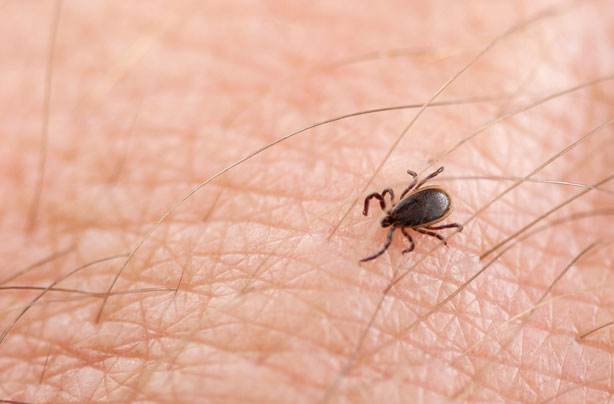What is Lyme disease? Lyme disease symptoms and treatment
If you or your child has been bitten by a tick you need to read this...


Worried your child might have Lyme disease? Here's the lowdown on what it is, how to spot the signs, and most importantly, how to treat it.
What is Lyme disease and how is it spread?
Lyme disease is a bacterial infection spread by ticks, so is most commonly picked up in the countryside, amidst long grasses or park lands during warmer months, when most people are out and about.
Not all ticks carry the bacteria that causes Lyme disease so if you or your child has been bitten by a tick it won't be certain that you or they will then have Lyme disease.
However, make sure you're familiar with the symptoms so that if you or your little one does start to feel unwell or develop any of the side affects you know to seek medical advice.
What are the Lyme disease symptoms?

The symptom most people are familiar with is the distinctive bullseye-like rash on the skin, seen in the images above and below. The NHS website states, 'Many people with early-stage Lyme disease develop a distinctive circular rash at the site of the tick bite, usually around three to 30 days after being bitten. This is known as erythema migrans'.
The size of this rash varies from person to person and can shrink or expand over time.
It's also worth noting that despite this being the symptom most associated with the disease, one in three people won't actually develop a rash at all.
GoodtoKnow Newsletter
Parenting advice, hot topics, best buys and family finance tips delivered straight to your inbox.
If your child has been bitten by a tick and hasn't developed a rash then there are some other signs to look out for.
Other main symptoms:
- Flu-like symptoms
- Tiredness
- Fatigue
- Muscle pain
- High temperature
- Stiff neck
- Chills
If left untreated Lyme disease can develop in the following weeks and months after infection becoming more serious, and harder to treat. Possible health complications following untreated Lyme disease include joint pain and swelling, nervous system problems, heart complications and paralysis.
How to treat Lyme disease

After a tick bite, keep an eye on your little one to make sure no symptoms flare up. If they do the sooner you seek treatment the better, to avoid any long-term damage.
If caught early on the treatment is a simple and effective course of antibiotics.
Because the symptoms of Lyme disease are similar to many other childhood illnesses it can be difficult to confirm but blood tests can take time. In these cases it's best to take a course of treatment while waiting for the blood results.
How to remove a tick

If your child, or you have been bitten by a tick you might be wondering how to get it off. They can be tricky to remove, as they burrow further into the skin when pulled.
There are three good methods for removal:
1. Using a small set of tweezers get as close to the surface of the skin as possible and tug firmly, trying to avoid crushing the tick (as this may cause the head to remain under the skin and the body to come away in your tweezers).
2. Take a loop of cotton thread and hook it around the base of the tick. Pull to one side to slide the tick out.
3. There are actually specialist metal and plastic tools available to remove ticks and these help to easily remove the whole thing. If you can't find it easily you could try pet shops, as cats and dogs often need ticks removing!
Once removed, wash the skin around the bite with soap and warm water and treat with an antiseptic cream as soon as possible.
Don't be tempted to burn the tick off with the end of a match as this method often, understandably, ends in a burn and without the successful removal of a tick.
If you're worried your child might have Lyme disease then it's best to see a GP. To find out more on the signs, symptoms and treatment available try visiting NHS.UK.

Rosie is an experienced food and drinks journalist who has spent over a decade writing about restaurants, cookery, and foodie products. Previously Content Editor at Goodto.com and Digital Food Editor on Woman&Home, Rosie is well used to covering everything from food news through to taste tests. Now, as well as heading up the team at SquareMeal - the UK's leading guide to restaurants and bars - she also runs a wedding floristry business in Scotland called Lavender and Rose.